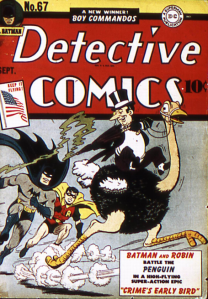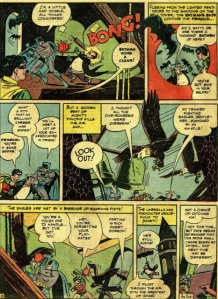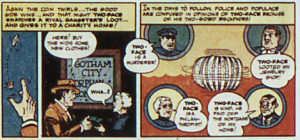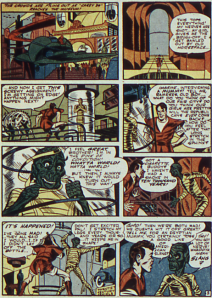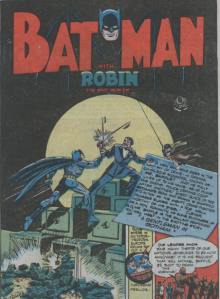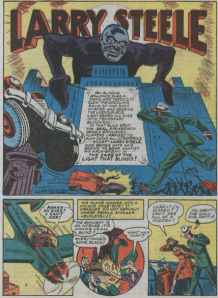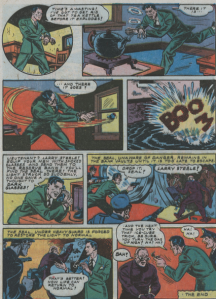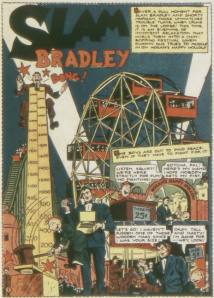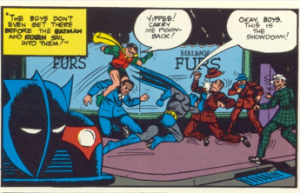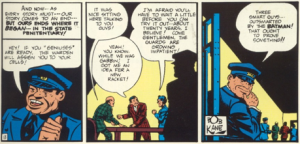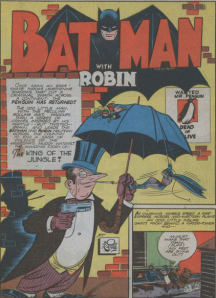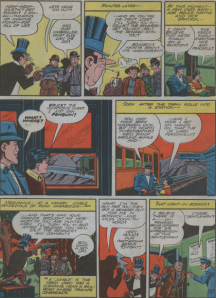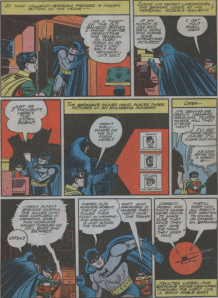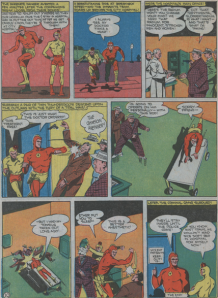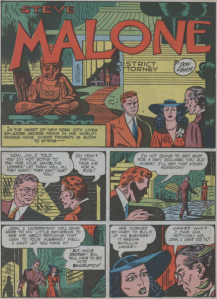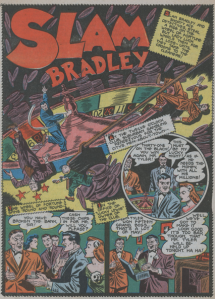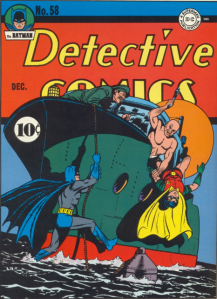
The Joker once again fails to get onto the cover with Detective 64 (June 1942). Its a generic Batman and Robin picture, vaguely militaristic, with the airplane. But I may just be reading that into it, as this is the first issue to be written after the attack on Pearl Harbour.

Bill Finger, Bob Kane and Jerry Robinson send the Joker to the electric chair in this tale. The Joker turns himself in, and confesses to all his past crimes. He gets sentenced to death, and executed.

And that’s just the beginning of the story! His men take his corpse and revive it, and he begins another spree.

The Joker at least puts up a front, pretending to be honest. Batman tries to have him executed again, but the sentence was carried out, and the Joker is no longer wanted for his past crimes.

Of course Batman exposes him, and there is a battle, and the Joker appears to die. We clearly see that he did survive. The Joker appearing to die at the end is almost mandatory by this point.
But a real change did happen. From this point on, the Joker does not kill, he is just a thief. All the way until the 70s.

The Boy Commandos debut, a Joe Simon and Jack Kirby series with no connection at all to the concept of “Detective.” But is was great, so who cares?
With little in the way of explanation, Rip Carter, from the US army, has assembled a group of orphaned children and leads them into battle during World War 2. Pierre Chavard, from France, Jan Haasen, from the Netherlands, Alfy Twidgett from England, as well as the stand-out character, Brooklyn.

The main character in this first story is actually someone else entirely, a burned out Frenchman, Leon La Farge, who gets his spirits and fight back from the Boys, and becomes a major resistance fighter.
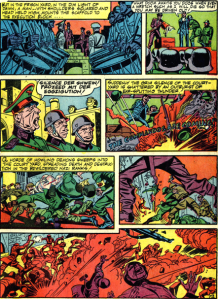
The war scenes are vivid, but while the Commandos are involved, they are not focussed on.

As the opening narration informs us, Batman, Green Arrow and the Crimson Avenger all have sidekicks, so clearly Air Wave needs one as well.

And like all the other heroes, he gets a talking parrot as a sidekick. Hmm, no, that’s not right. The parrot is of use in this story, as it helps Air Wave prove his innocence after being framed for murder.

Larry names the parrot Static, which is a great name for a sidekick for Air Wave, but not so great for the parrot of a law clerk.
As

